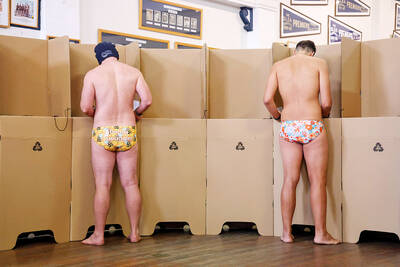Egyptian archaeologists, who normally scour the desert in search of treasures of the past, have discovered that one of the greatest caches of antiquities may well be in the basement of the Egyptian Museum.
For the past century, artifacts have been stored away in crates there and forgotten, often allowed to disintegrate in the dank, dusty cavern.
Forgotten until now. The recent theft and recovery of three statues from the basement have prompted antiquity officials in Egypt to increase an effort already under way to complete the first comprehensive inventory of artifacts in the basement.
"For the last 100 years, curators sat down to drink tea, but they did not do their jobs," said Zahi Hawass, the general secretary of the Supreme Council of Antiquities. "How many artifacts are in the basement? It was awful."
Step through a small, Hobbit-sized door, down a steep flight of stairs and through a locked gate. The basement is a maze of arched passageways and bare light bulbs hanging from decaying wires. It is packed with wooden crates, hundreds of them, sometimes piled floor to ceiling.
Cobwebs cling to ancient pottery and tablets engraved with hieroglyphics. Six hundred coffins and 170 mummies have been found so far. No one knows what may have been stolen over the years.
Last year, officials reported that 38 golden bracelets from Roman times had vanished from the basement, apparently six years earlier.
"It is an accumulation of 100 years of neglect," said Ali Radwan, a professor of Egyptology at Cairo University who took a recent tour of the basement. "It is not appropriate for a country like Egypt to have such miserable storage for its history."
The Egyptian Museum is a 104-year-old repository of some of the world's most famous antiquities. Inside, there are the mummified remains of pharaohs, like Ramses II, who died in 1212 BC. There are the treasures of the young Pharaoh Tutankhamen, the golden chariot and the golden mask.
Built and designed by the French, the two-story building in central Tahrir Square has changed little over the decades. It remains crowded with an estimated 120,000 items, most of which have also never been properly inventoried, museum officials said. And even the exhibition areas can be haphazardly arranged: Some of the labels date to colonial times, and some items are not labeled at all.
Certainly the Egyptian museum is not alone in its struggle to keep up with a vast collection acquired over so many years -- though the scope of the problem here may be unrivaled.
Nearly two years ago, antiquity officials hired a company to begin to clean out the basement and to convert some of the space into an exhibition area. Last year, Hawass decided that a more precise accounting was needed, so he sent in a team of curators to do a complete inventory.
It was a slow process in very difficult working conditions. There is little ventilation, poor lighting and dust -- lots and lots of dust. So far 22,000 items have been inventoried -- about 20 percent of what is actually in the basement, said Sabah Abdel Razek, the curator overseeing the job.
The team never knows what it will find when a crate is cracked open.
"It's like we are excavating," Abdel Razek said.
The work was proceeding quietly until early last month, when the museum discovered that three statues dating from the Old Kingdom era (2649 BC to 2152 BC) were missing. Initially, Hawass insisted that the pieces could not have been stolen.
But after curators scoured the basement for more than a week, the tourism and antiquities police arrested two men from the cleanup crew. They told the police that the statues were left in a corner for three days so they thought no one wanted them. They smuggled them out of the museum with construction debris, officials said.
After all the embarrassing publicity, Hawass decided to declare that it was time -- once and for all -- to put the basement in order.

Kehinde Sanni spends his days smoothing out dents and repainting scratched bumpers in a modest autobody shop in Lagos. He has never left Nigeria, yet he speaks glowingly of Burkina Faso military leader Ibrahim Traore. “Nigeria needs someone like Ibrahim Traore of Burkina Faso. He is doing well for his country,” Sanni said. His admiration is shaped by a steady stream of viral videos, memes and social media posts — many misleading or outright false — portraying Traore as a fearless reformer who defied Western powers and reclaimed his country’s dignity. The Burkinabe strongman swept into power following a coup in September 2022

‘FRAGMENTING’: British politics have for a long time been dominated by the Labor Party and the Tories, but polls suggest that Reform now poses a significant challenge Hard-right upstarts Reform UK snatched a parliamentary seat from British Prime Minister Keir Starmer’s Labor Party yesterday in local elections that dealt a blow to the UK’s two establishment parties. Reform, led by anti-immigrant firebrand Nigel Farage, won the by-election in Runcorn and Helsby in northwest England by just six votes, as it picked up gains in other localities, including one mayoralty. The group’s strong showing continues momentum it built up at last year’s general election and appears to confirm a trend that the UK is entering an era of multi-party politics. “For the movement, for the party it’s a very, very big

ENTERTAINMENT: Rio officials have a history of organizing massive concerts on Copacabana Beach, with Madonna’s show drawing about 1.6 million fans last year Lady Gaga on Saturday night gave a free concert in front of 2 million fans who poured onto Copacabana Beach in Rio de Janeiro for the biggest show of her career. “Tonight, we’re making history... Thank you for making history with me,” Lady Gaga told a screaming crowd. The Mother Monster, as she is known, started the show at about 10:10pm local time with her 2011 song Bloody Mary. Cries of joy rose from the tightly packed fans who sang and danced shoulder-to-shoulder on the vast stretch of sand. Concert organizers said 2.1 million people attended the show. Lady Gaga

SUPPORT: The Australian prime minister promised to back Kyiv against Russia’s invasion, saying: ‘That’s my government’s position. It was yesterday. It still is’ Left-leaning Australian Prime Minister Anthony Albanese yesterday basked in his landslide election win, promising a “disciplined, orderly” government to confront cost-of-living pain and tariff turmoil. People clapped as the 62-year-old and his fiancee, Jodie Haydon, who visited his old inner Sydney haunt, Cafe Italia, surrounded by a crowd of jostling photographers and journalists. Albanese’s Labor Party is on course to win at least 83 seats in the 150-member parliament, partial results showed. Opposition leader Peter Dutton’s conservative Liberal-National coalition had just 38 seats, and other parties 12. Another 17 seats were still in doubt. “We will be a disciplined, orderly